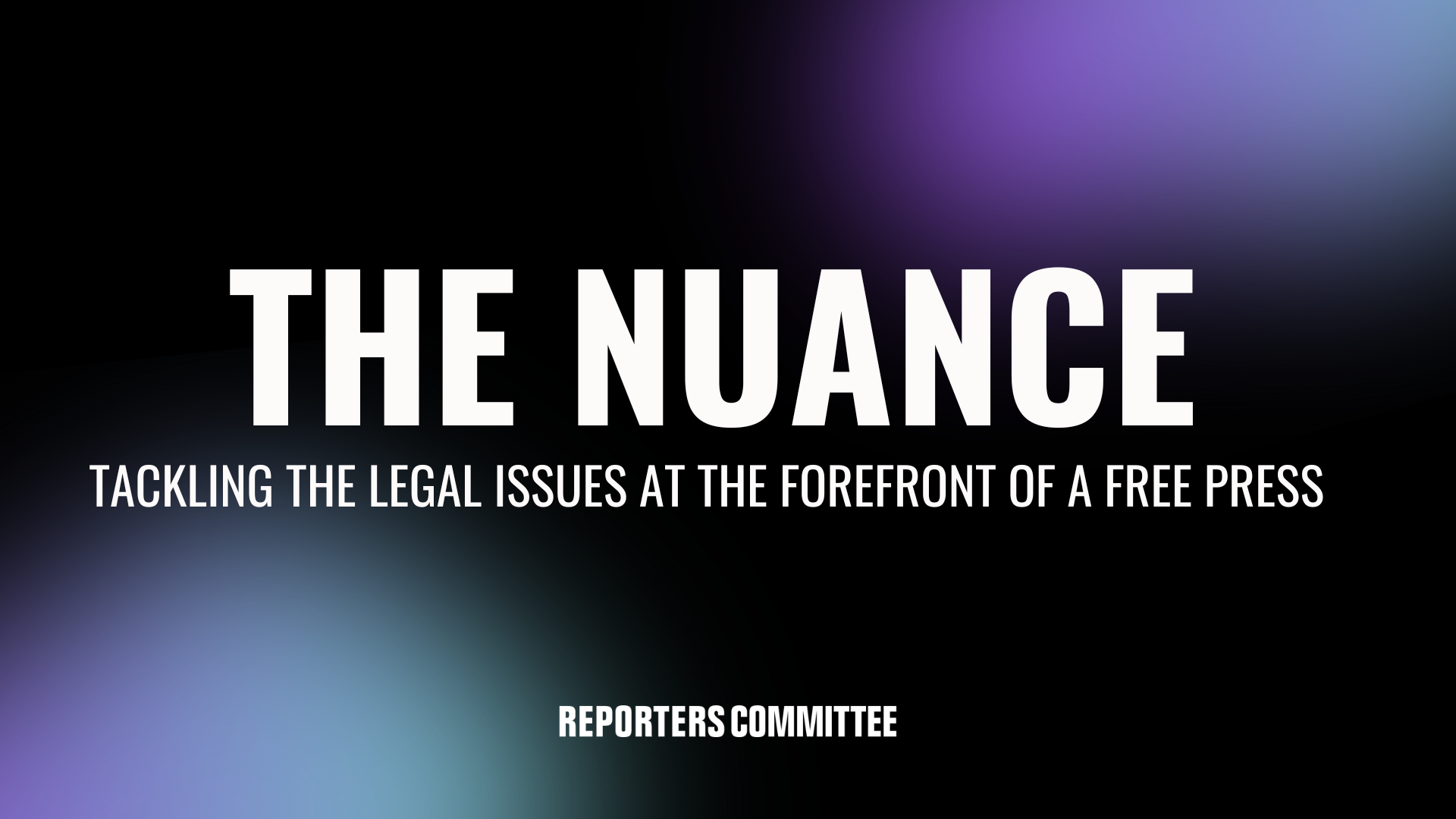It’s time to pass the PRESS Act

The time between an election and the inauguration of a new Congress — or the lame duck, as it is affectionately known — is ironically a time when things can happen on the Hill, in part because departing members don’t have to worry about reelection, and Congress has to agree on certain must-pass bills (the National Defense Authorization Act, for instance) before year’s end. This year, the Senate has a unique opportunity to pass a landmark federal shield bill that would protect journalists from being forced to disclose source information and work product to federal agencies and courts, with narrow exceptions.
We’ve talked about the PRESS Act in this newsletter before, and we’re talking about it again because, well, it’s kind of a big deal. It passed unanimously in the House in September, and it is now pending in the Senate Judiciary Committee. This is the first time in close to a decade that Congress has focused on the measure.
Almost all states and the District of Columbia recognize a reporter’s privilege or have some sort of reporter’s shield law. And the U.S. Department of Justice recently adopted new regulations that will sharply limit it from seeking sensitive records from, or of, journalists, subject to very narrow exceptions. These new regulations are also a big deal (and full disclosure: the Reporters Committee was involved in advocating for them). But these are Justice Department regulations, so they could be changed under another attorney general.
Only Congress can provide the press the durable protection of a federal statute. The PRESS Act would do just that. And it’s significantly better than past proposals. The PRESS Act would create uniform federal protections for journalists from subpoenas, court orders, search warrants, and other forms of legal process by federal courts and executive branch agencies. Critically, the PRESS Act would bar the government from requesting data about journalists from third parties like cell phone companies, search engines, and internet service providers, in addition to efforts to compel the same information from journalists directly.
The bill includes a few exceptions, but they are narrow. Where a court finds there is “a reasonable threat of imminent violence,” for instance. And, for process directed at journalists, when the information is needed to “prevent, or to identify any perpetrator of, an act of terrorism against the United States.” When an exception applies, the government must tell a court that it is seeking the records of a journalist. The journalist must get notice and an opportunity to be heard, unless a judge determines that doing so “would pose a clear and substantial threat to the integrity of a criminal investigation or would present an imminent risk of death or serious bodily harm.”
The PRESS Act has broad bipartisan support and is a reasonable, common-sense measure to protect the public’s right to know. That’s why it passed the House unanimously, and why 49 states and the District of Columbia have similar protections. Your move, Senate.
Like what you’ve read? Sign up to get The Nuance newsletter delivered straight to your inbox!
The Technology and Press Freedom Project at the Reporters Committee for Freedom of the Press uses integrated advocacy — combining the law, policy analysis, and public education — to defend and promote press rights on issues at the intersection of technology and press freedom, such as reporter-source confidentiality protections, electronic surveillance law and policy, and content regulation online and in other media. TPFP is directed by Reporters Committee attorney Gabe Rottman. He works with RCFP Staff Attorney Grayson Clary and Technology Press Freedom Project Fellow Emily Hockett.